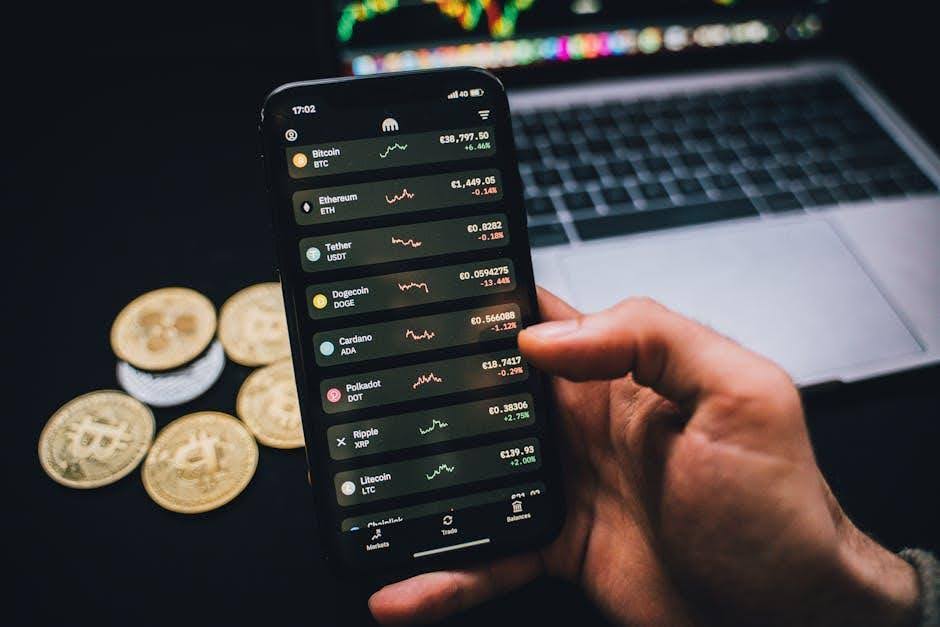
5 Use Cases That Help Ethereum Maintain Its Market Cap
Blockchain technologies, such as decentralized finance (DeFi), are changing how money works in ways never imaginable before. Ethereum's blockchain makes lending, borrowing, trading, and possessing digital assets simple and safe. Decentralized apps (dApps) and smart contracts always add to the ecosystem. Ethereum is more than just a blockchain for money. Programmers can use Ethereum as a "world computer" for numerous applications. Developers can use strong decentralized applications (dApps) and protocols that do more than move money around. There are many new things that Ethereum 2.0 can do. It is currently a big player in cryptocurrency and digital banking.
- Decentralized Finance (DeFi)
DeFi revolutionized crypto by enabling direct financial transactions on Ethereum without traditional intermediaries. Smart contracts power DeFi platforms for lending, borrowing, and trading, enhancing transparency and efficiency. This process democratizes financial access and drives rapid innovation. Major platforms offer robust services for cryptocurrency holders, enabling various forms of passive income through staking or yield farming. As adoption increases, utility and demand for Ethereum escalate, influencing its Ethereum price and market presence. DeFi includes services like borrowing/lending protocols, yield farming, and decentralized exchanges (DEXs). The Total Value Locked (TVL) in Ethereum DeFi protocols indicates that network activity and utility directly support the market valuation. Its growth shows the tangible value built on the platform, attracting investment and usage.
- Non-Fungible Tokens (NFTs)
NFTs, those unique digital assets, fundamentally changed the way creators and collectors interact with media, art, music, and collectibles. Ethereum plays a pivotal role by providing a reliable and verifiable method for the ownership and exchange of digital assets. The idea opened up new revenue streams. The prospect attracted serious investment. As this market balloons, Ethereum's allure for digital ownership just grows stronger. It's far beyond digital art now.
NFTs are carving out new economic models in digital fashion, music rights, and those sprawling virtual gaming worlds. Think in-game items, virtual real estate, domain names, and ticketing. They bring true scarcity and on-chain verifiable authenticity, sparking fresh markets on Ethereum. Those headline-grabbing sales and bustling NFT marketplace can contribute to this phenomenon. They massively boost network activity and visibility, cementing Ethereum's role in the digital ownership revolution and pushing up transaction volume.
- Decentralized Applications (dApps)
Because these platforms don't have a central authority, the people who utilize them have direct power and control over their experiences. People use Ethereum-based smart contracts for many things, such as checking identities, social networking, managing supply chains, and playing games. This decentralized structure makes things safer, reduces the number of middlemen, and encourages community governance. It's an open, programmable landscape fueling rapid innovation, attracting developers worldwide to build a shared, accessible digital infrastructure. As developers and users engage,
Ethereum's ecosystem thrives, reinforcing its market position. DApps are a fundamental shift from traditional centralized software. They run on peer-to-peer networks, making them censorship-resistant and less prone to single points of failure. Think prediction markets, identity systems, and DAOs. The diversity and sophistication of dApps create a network effect, attracting users and developers building transparent applications across sectors.
- Smart Contracts
Automating agreements via smart contracts transformed traditional business. These self-executing contracts in code eliminate intermediaries, reducing disputes. Built on Ethereum, they execute predefined conditions automatically, ensuring transparency and trust. While powerful, developing secure smart contracts requires meticulous code audits to mitigate risks and build user trust effectively. This feature streamlines operations across industries, from real estate to finance, enhancing efficiency and reducing costs.
As organizations increasingly recognize the benefits, demand for Ethereum's smart contracts grows, solidifying market relevance. Smart contracts drive many Ethereum use cases, from DeFi logic to NFT management. Once deployed, their logic is transparent and immutable, providing trust and predictability. Beyond finance and assets, smart contracts apply to supply chain The activities include tracking, processing royalty payments, handling insurance claims, and facilitating DAO voting. This programmability makes Ethereum powerful for automating processes, underpinning much of its utility.
- Ethereum 2.0
The Merge, which is part of Ethereum 2.0, greatly improves scalability, security, and long-term survival. Proof-of-stake saves energy and speeds up transactions. This change makes it easier to stake ETH, which attracts new projects and investments that improve its market position and infrastructure. By replacing mining with staking, the Merge made the network more scalable and had less of an impact on the environment, increasing trust in its long-term stability.
Ethereum's Multifaceted Ecosystem and Market Impact
Ethereum's blockchain is a key part of the cryptocurrency market since it can be used in so many different ways and has led to so many new ideas. Each use case, whether DeFi, NFTs, smart contracts, or Ethereum 2.0 updates, makes the ecosystem more alive and draws in both consumers and developers. Ethereum is still important and leads the way since its technology is constantly changing and its usefulness is growing. The platform's market valuation depends on the continued growth and broad use of these game-changing innovations. DeFi, NFTs, dApps, smart contracts, and Ethereum 2.0 all work together to keep Ethereum's market position and future in digital finance strong.

Comments (0)